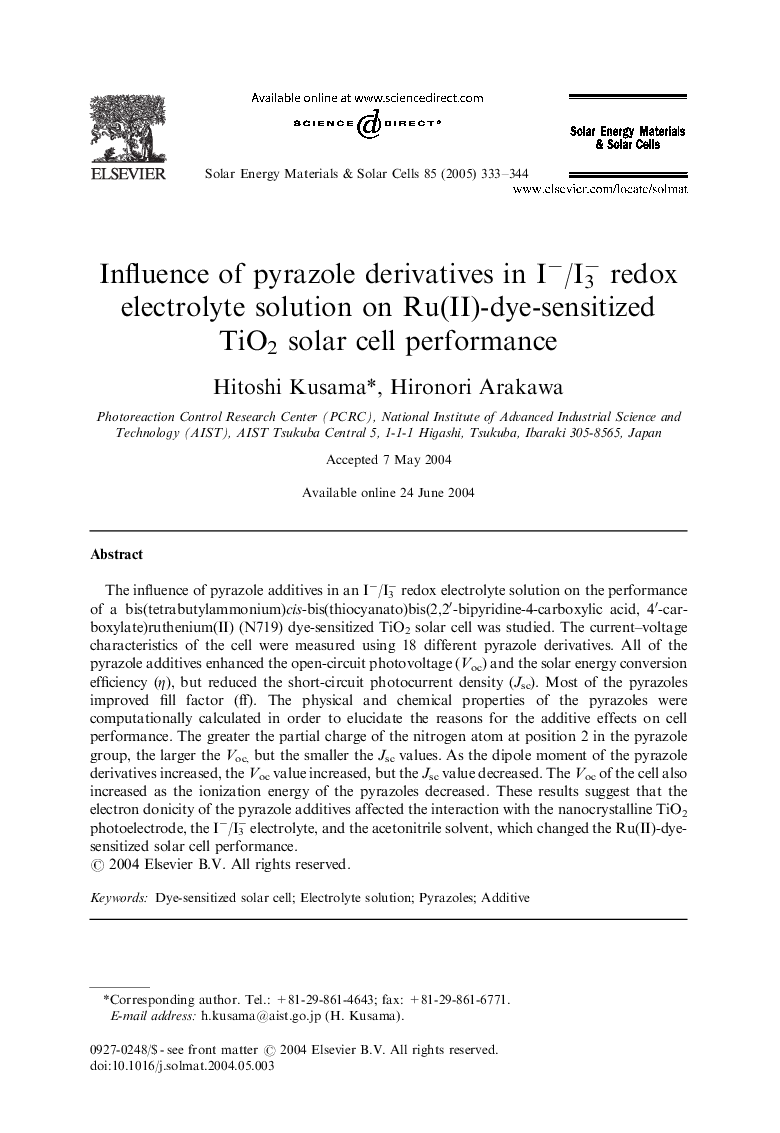| Article ID | Journal | Published Year | Pages | File Type |
|---|---|---|---|---|
| 10248856 | Solar Energy Materials and Solar Cells | 2005 | 12 Pages |
Abstract
The influence of pyrazole additives in an Iâ/I3â redox electrolyte solution on the performance of a bis(tetrabutylammonium)cis-bis(thiocyanato)bis(2,2â²-bipyridine-4-carboxylic acid, 4â²-carboxylate)ruthenium(II) (N719) dye-sensitized TiO2 solar cell was studied. The current-voltage characteristics of the cell were measured using 18 different pyrazole derivatives. All of the pyrazole additives enhanced the open-circuit photovoltage (Voc) and the solar energy conversion efficiency (η), but reduced the short-circuit photocurrent density (Jsc). Most of the pyrazoles improved fill factor (ff). The physical and chemical properties of the pyrazoles were computationally calculated in order to elucidate the reasons for the additive effects on cell performance. The greater the partial charge of the nitrogen atom at position 2 in the pyrazole group, the larger the Voc, but the smaller the Jsc values. As the dipole moment of the pyrazole derivatives increased, the Voc value increased, but the Jsc value decreased. The Voc of the cell also increased as the ionization energy of the pyrazoles decreased. These results suggest that the electron donicity of the pyrazole additives affected the interaction with the nanocrystalline TiO2 photoelectrode, the Iâ/I3â electrolyte, and the acetonitrile solvent, which changed the Ru(II)-dye-sensitized solar cell performance.
Related Topics
Physical Sciences and Engineering
Chemical Engineering
Catalysis
Authors
Hitoshi Kusama, Hironori Arakawa,
